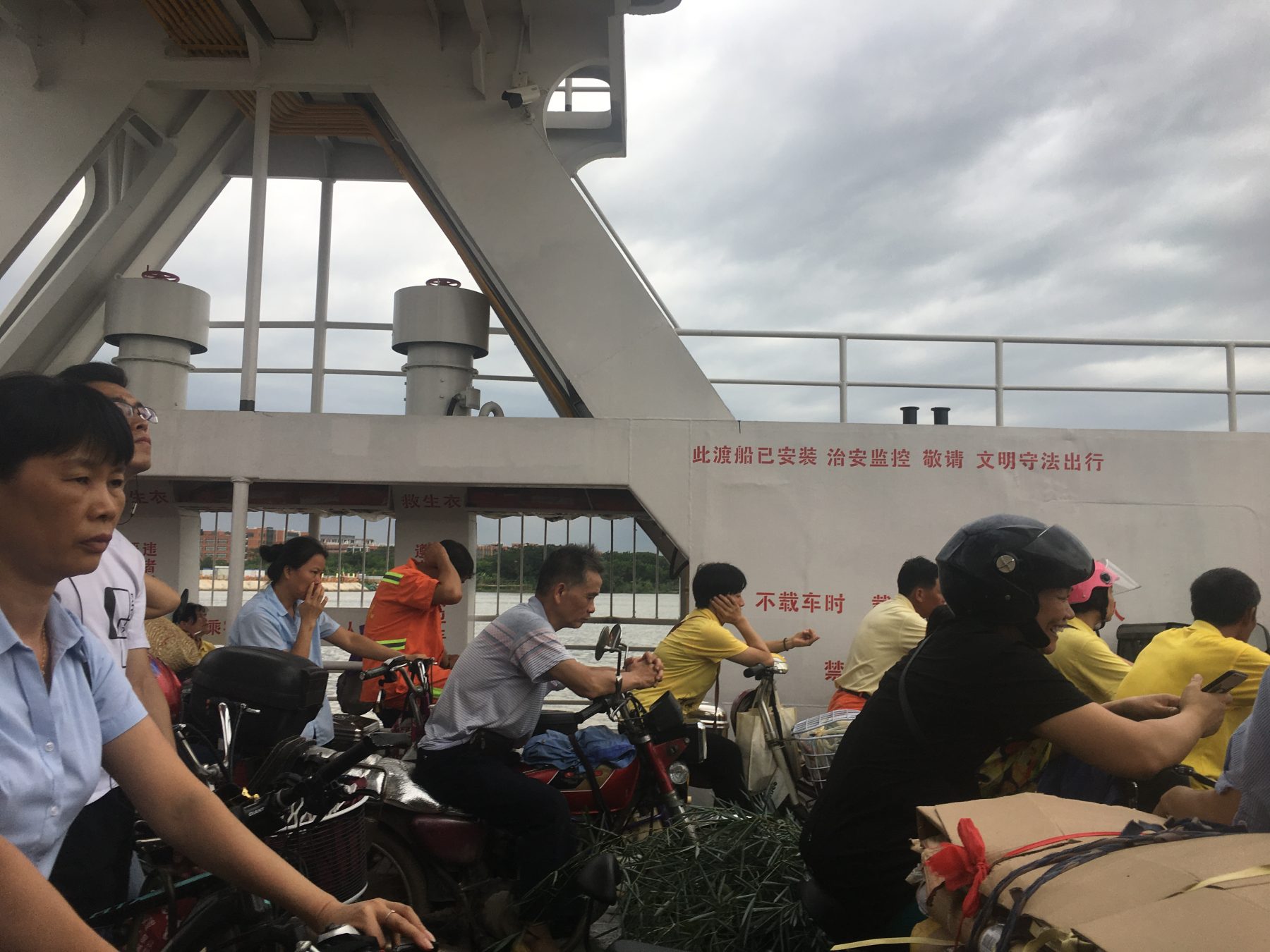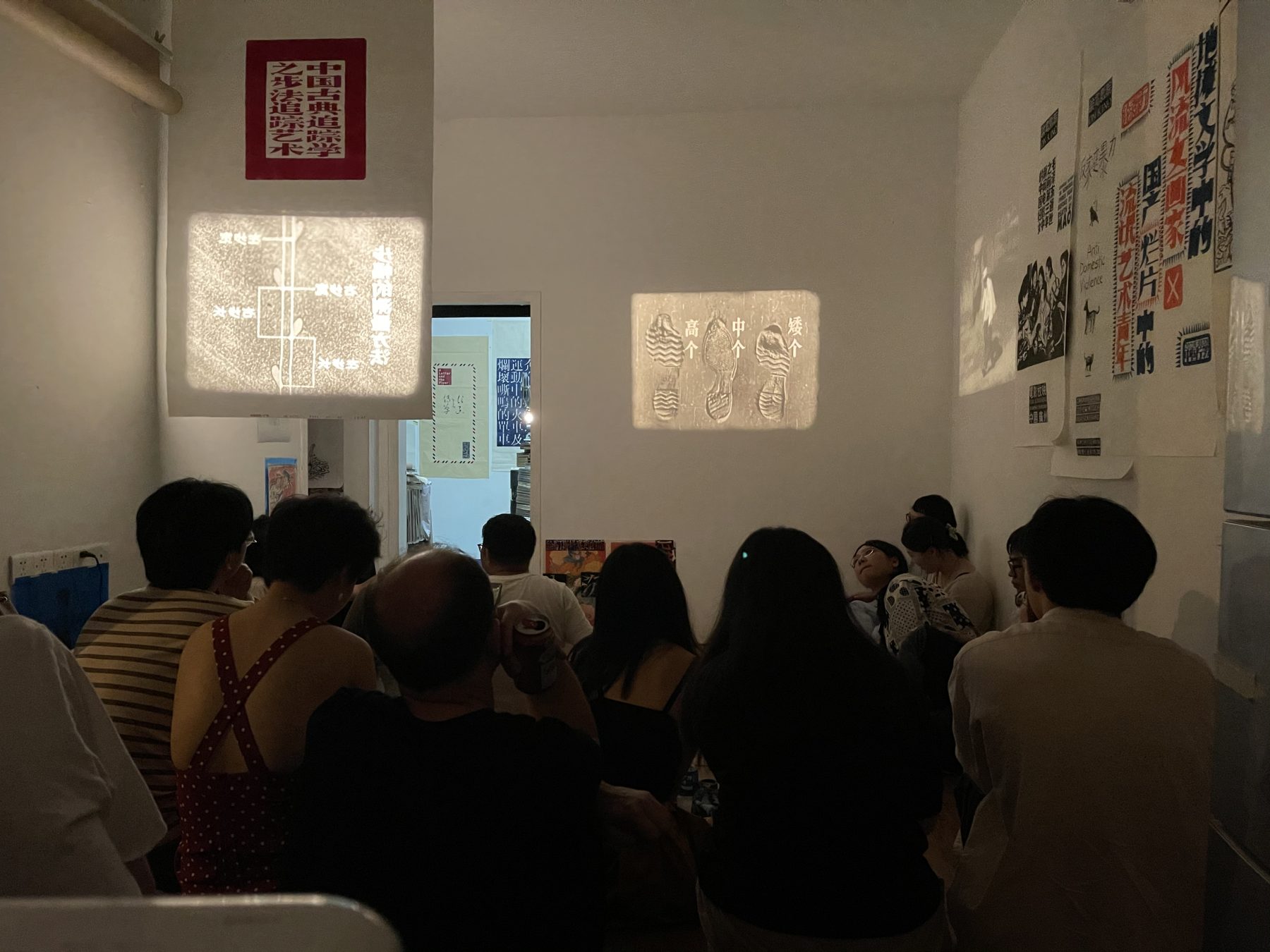The Obsolete and The Resurrected:
In the summer of 2019, the last “good” year prior to the global pandemic, we took a trip to Xiaozhou village on the outskirts of Guangzhou. Over the past nearly forty years of economic reform, the region of Pearl River Delta has been at the frontier of China’s development and has gained a reputation as the world’s manufacturing centre. Cities like Guangzhou, Foshan, Shenzhen, and even Hong Kong, from as far as over 100 km away, have been integrated into one gigantic urban network, made possible by high-speed trains, highways and numerous large-scale infrastructures. In contrast, Xiaozhou village belongs to another space and time, bypassed by high-speed railway flyovers, and tangential to this period of hyper progress. It sits slightly off the large Pearl River Delta urban development scheme, and the typical canton urban village streets indicate its obsolescence in time. The main purpose of the trip was to visit our friend Qin Dao, a self-taught artist, designer and collector of obsolete film media, and his ‘On Kino’, a.k.a. Dao’s own living room – a self-claimed film theatre, a video screening room and a moving image archive all in one. Due to the cheap rent and proximity to large cities, Xiaozhou has attracted many like-minded artists and cultural workers in the past years. A dynamic community incubated by obsolescence.

A part of Qin Dao’s daily activity is to unearth forgotten 16mm and 35mm prints, and videotape works from China’s past. The collection is diverse: state propaganda or educational films produced in Mao’s China, including those made during the Culture Revolution; banned films released by state-owned film studios in the 1980s; and semi-underground cult films produced for black market circulation on beta tapes and VHS, including some of the most exciting yet largely unknown Chinese films made during the period of social unrest in the late 1980s. Piled up in stacks in his apartment, these film reels and cassette tapes constitute a world of memories covered with dust – often because they have become politically sensitive and thus censored, or were banned due to their overt expressions of wild desires and fantasies by a socialist state claiming to protect its people from dangerous influences. We were also amazed by how sensationalised the posters and images attached to the film packages were because in our memory, there are hardly any Chinese films with the same-level of boldness, creativity and radicality. The On Kino space has not only become a physical archive where these still and moving images converge, but also a stage for their re-presentation in a present-day context through Qin’s creative curating practices. Through screening programs, re-editing and poster-making, Qin creates dialogues and stories between those otherwise disparate and disregarded lost memories, facilitating imaginary links between tropical plants and socialist anti-espionage, planned-birth policy and mass Qigong practice, railway construction in the mountains of China’s southwest and ballroom dance in 1989’s Beijing. Unlike films that are preserved in official film archives that belong to the past tense, films in On Kino’s programs were obsoletely present. They were resurrected to find their way into our Jetztzeit, urging us to reshape how we conceive of the past and the present.

Qin Dao’s practices echo with our recent interest in and contemplation on media archaeology (Tang 2022, Huhtamo & Parikka 2011, Parikka 2012, Zielinski 1999) and how it can be understood in the context of film and media history in Asia. In “Media Archaeology as Poetics of Obsolescence”, Thomas Elsaesser claims that “one of the initial impulses of media-archaeology was to make the past strange again, rather than all too familiar” (2016:105). He, thus, re-defined obsolescence as a positive description of a media practice that is “signifying something like heroic resistance to relentless acceleration, and in the process has become the badge of honour of the no-longer-useful (which by itself associates the obsolete with the ‘disinterestedness’ of the aesthetic impulse). Obsolescence can even be the rallying point for sustainability and recycling, while also making an eloquent plea for an object-oriented philosophy and a new materialism of singularity and self-sufficiency of being.” (105-106) The practices of Qin, like other cases in this special issue, don’t aim to fit past objects into any fixed frames of a linear film history. Rather, they reflect, revisit and reinstall those “already known” in previously repressed, forgotten or neglected discourses. The “new” in media archaeology is not the different, as is stated in Boris Groys’ On the New (2014), but a revaluation of the worthless in the profane world while creating possibilities of incorporating them into cultural archive and memory.
In Asia, the urgency of media archaeology should be examined not only in the historical context of technology in this region, but in its social and cultural contexts as well. Firstly, in the early years of the development of film, with the exception of Japan, there was no autonomous production of media material across Asia. However, by the later years, the understanding of the relationship between technological development and social development had become too linear in many Asian societies. This linear understanding of technology led to a widespread quest for rapid technological renewal. Secondly, the “first-slow-then-fast” development of media history has been deeply entwined with the region’s colonial history during the twentieth century, the post-World War II American cultural hegemony, the economic imbalances within Asia, the consolidation of nation states as the prevailing cognitive framework and the changing gender consciousness and family traditions of the region. Whoever seized the power of film and media technology and of the dissemination of images has the power to produce private and public memories and construct archival repositories. This special issue explores how Asian filmmakers, artists, writers and scholars have been trying to disrupt established historical linearity, uncovering new spatial and temporal possibilities. We hope it may provide an opportunity to see through a lens of media archaeology which attempts to challenge linear history and find the “new” in the “ghost-like” and “zombie-like” media.
In the form of video essay, scholarly research and diary-like writings, the authors in this edition respond to the tensions between the old and the new in cinematic media in the context of Asia in both the 20th and the 21st century. Qin Dao recounts three stories of obsolete media from China’s post-socialist period: VCD and VHS circulations, socialist film projectors, and rural open-air cinema. Delving into amateur travel films shot by Japanese tourists in colonial Korea and Manchuria in the 1920s and 1930s, Shota T. Ogawa correlates the ephemeral life of the 9.5mm film system to the interwar period in imperial Japan when the nation’s modern project met with the global dissemination of the standardised “modern life”. Ogawa also questions notions of adequacy, suggesting that inadequately obsolete objects are necessary to critically examine “the calm surface of the present”. Ma Ran explores the intersection of landscape, essay film and critiques of modernity in Japan’s imperial formations. Through studies of Takamine Gō’s affective landscapes, Ma unfolds the interstices of essayistic thinking in the multi-layered-ness of Okinawa, a place haunted by memories of war and the presence of imperialism, contested between different geopolitical and discursive forces. Ruby Hsieh I-Hsuan looks at the case of the recent restoration of Ghost Carnival, a 1990’s Taiwanese queer film, to reflect on how film archives as institutions are shaped by epistemological systems, and how the afterlife of films often struggle within specific national and cultural contexts. Timmy Chih-Ting Chen’s contribution uncovers the forgotten life of Ho Fan as an experimental filmmaker, who is otherwise widely known as the most iconic street photographer of Hong Kong and a commercially successful director of erotic cinema. Pan Lu and Yu Araki conversed over the making of Anachronic Chronicle: Voyages Inside/Out Asia, an archival film made mainly out of their family VHS tapes from the 1990s. Their conversation opens up memories that are not only personal but also shared across Asian borders and made possible by the advent of consumer home video cameras. This also reminds us of the transnational nature of media, the fluidity of which cannot be divorced from people’s migrations. Based on the experience of working on her “Exile Trilogy”, a project that traces the often-disregarded Korean diasporas in central Asia enforced by the Stalin regime, Soyoung Kim reflects on documentary filmmaking practice and the endeavor to “awake” the dead – those who have vanished from history. Rosalia Namsai Engchuan writes about Tongpan, a 1977 activist docudrama produced in Isaan, the often-stigmatised Northeast province of Thailand which is familiar to today’s cinephiles thanks to Apichatpong Weerasethakul. Drifting between fiction and reality both in and out of the film, Engchuan raises questions on the construction of the “other” in both colonial and postcolonial conditions, problematising the developmental view of a “better life”, leading to global migrations that are often accompanied with violence, injustice and exploitation. When we invited John Torres to contribute, he and his family were preparing to leave the Philippines for an artist residency in Berlin. For this issue, he has composed a deeply touching audio-visual piece, in which mundane conversations with family, kids and friends at the moment of departure are surrounded by a soundtrack recorded in or outside a car. It was made whilst in motion through an unknown environment, setting the tranquility of a moment of personal farewell in contrast to the incomprehensible darkness cast by the recent return of the dictatorial ghost of Marcos. We also include veteran Taiwanese experimental filmmaker Kao Chung-li’s own writing on his philosophy and theory of image machine and machine image in a West-dominated world of filmmaking.
We opened this introduction in a moment that belongs to the pre-covid era when the experience of globalisation was widely perceived as a natural matter of acceleration, generating a reinforced sense of synchronised time in every corner of the world. The global pandemic has not only brought the increasing pace of globalisation to a halt, but also torn apart the illusion of a homogenised temporality. On a personal level, many of us have become confused with time due to lockdowns and sudden interruptions to the temporal flows of routine activities. On a grander level, quarantines have made it clear that national borders are not only physical boundaries that separate sovereignties but also serve to guard different temporalities. Different countries are obviously living through different pandemic times (or post-pandemic times, the difference between which is elusive), especially in Asia where the people’s expectation of governmental control and the idea of self-care are always in tension. At a time when the faith in a linear, developmental, globalised future gives way to the resurrected phantoms of war, borders, racism, black markets and authoritarian states (which were in fact ingrained at the foundation of such a faith), we endeavour to show how “ghost-like” media from the past may help us to suspend the acceleration and its seemingly smooth progress. To challenge the linear history of film via archeological cinema is not to return to the denial of coevalness that was initially advanced by colonialism, but rather to uncover the presence of the obsolete, the forgotten and the vanished, to open up imaginations for a “new” other future.
________________
References:
Elsaesser, Thomas. Film History as Media Archaeology : Tracking Digital Cinema. Amsterdam: Amsterdam University Press, 2016. Print.
Groĭs, Boris. On the New. Brooklyn: Verso, 2014. Print.
Huhtamo, Erkki & Jussi Parikka. Media Archaeology : Approaches, Applications, and Implications. Berkeley: University of California Press, 2011. Print.
Parikka, Jussi. What Is Media Archaeology? Cambridge, UK : Polity Press, 2012. Print.
Tang, Hongfeng. Transparency: Chinese Visual Modernity (1872-1911). Beijing: Joint Publishing Company, 2022. Print.
Zielinski, Siegfried. Audiovisions Cinema and Television as Entr’actes in History. Amsterdam: Amsterdam University Press, 1999. Print.